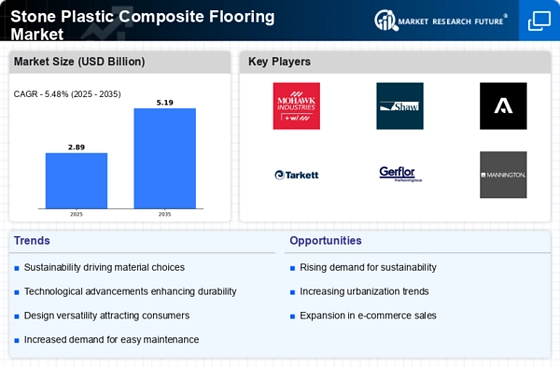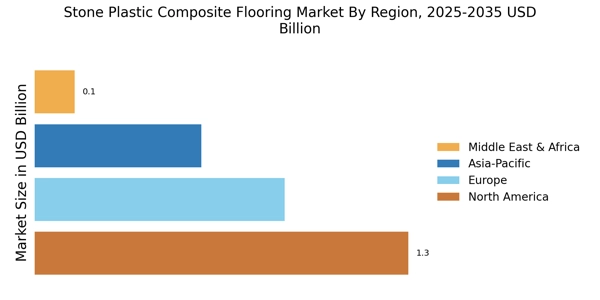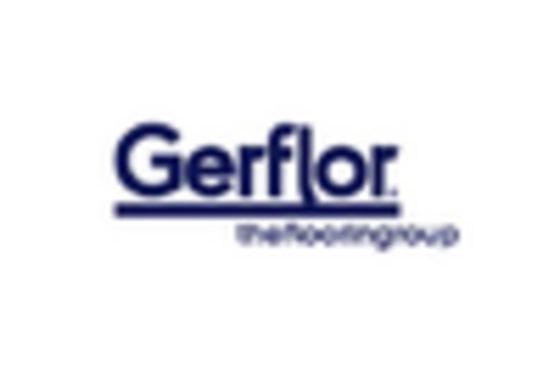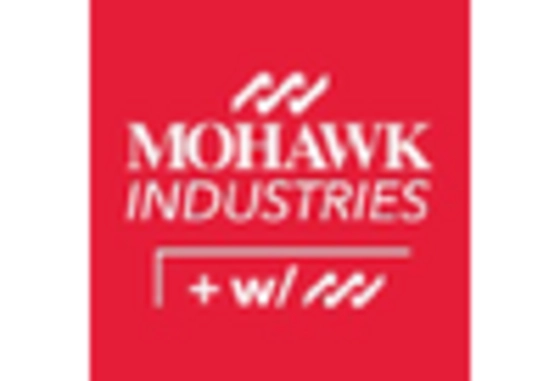Cost-Effectiveness
Cost-effectiveness is a vital driver for the Stone Plastic Composite Flooring Market. SPC flooring offers a competitive price point compared to traditional flooring materials, such as hardwood and ceramic tiles, without sacrificing quality or appearance. This affordability makes SPC an attractive option for budget-conscious consumers and businesses looking to renovate or build new spaces. Additionally, the low maintenance requirements and long lifespan of SPC flooring contribute to its overall cost-effectiveness, as it reduces long-term expenses associated with repairs and replacements. As economic considerations remain a priority for many, the cost advantages of SPC flooring are likely to bolster its market presence in the coming years.
Design Versatility
The design versatility of Stone Plastic Composite Flooring Market is a significant driver for the market. SPC flooring is available in a myriad of styles, colors, and textures, making it suitable for various applications, from residential to commercial spaces. This adaptability allows consumers to achieve their desired aesthetic without compromising on performance. The ability to mimic natural materials, such as wood and stone, while offering superior durability and water resistance, positions SPC flooring as a preferred choice among designers and architects. Market data indicates that the demand for versatile flooring solutions is on the rise, with SPC flooring capturing a notable share due to its ability to meet diverse design needs.
Sustainability Focus
The increasing emphasis on sustainability is a pivotal driver for the Stone Plastic Composite Flooring Market. Consumers and manufacturers alike are gravitating towards eco-friendly materials that minimize environmental impact. Stone Plastic Composite (SPC) flooring is often made from recycled materials, which aligns with the growing demand for sustainable building products. This trend is further supported by regulations and incentives aimed at promoting green construction practices. As a result, the market for SPC flooring is projected to grow, with estimates suggesting a compound annual growth rate of around 10% over the next few years. This focus on sustainability not only enhances the appeal of SPC flooring but also positions it as a viable alternative to traditional flooring options, thereby expanding its market share.
Technological Advancements
Technological advancements play a crucial role in shaping the Stone Plastic Composite Flooring Market. Innovations in manufacturing processes have led to the development of more durable and aesthetically pleasing SPC flooring options. Enhanced production techniques, such as digital printing and improved core technology, allow for a wider variety of designs and textures, catering to diverse consumer preferences. Furthermore, advancements in installation methods, including click-lock systems, have simplified the process, making SPC flooring more accessible to homeowners and contractors. As these technologies continue to evolve, they are likely to drive market growth, with projections indicating a steady increase in demand for SPC flooring solutions that combine functionality with style.
Rising Real Estate Development
The rising real estate development is a key driver for the Stone Plastic Composite Flooring Market. As urbanization continues to accelerate, there is a growing demand for new residential and commercial properties. SPC flooring is increasingly being specified in new construction projects due to its durability, ease of installation, and aesthetic appeal. Market trends indicate that the construction sector is experiencing robust growth, with SPC flooring being favored for its ability to withstand high foot traffic and moisture exposure. This trend is expected to continue, with forecasts suggesting that the demand for SPC flooring will rise in tandem with the expansion of real estate development, further solidifying its position in the market.


















Leave a Comment